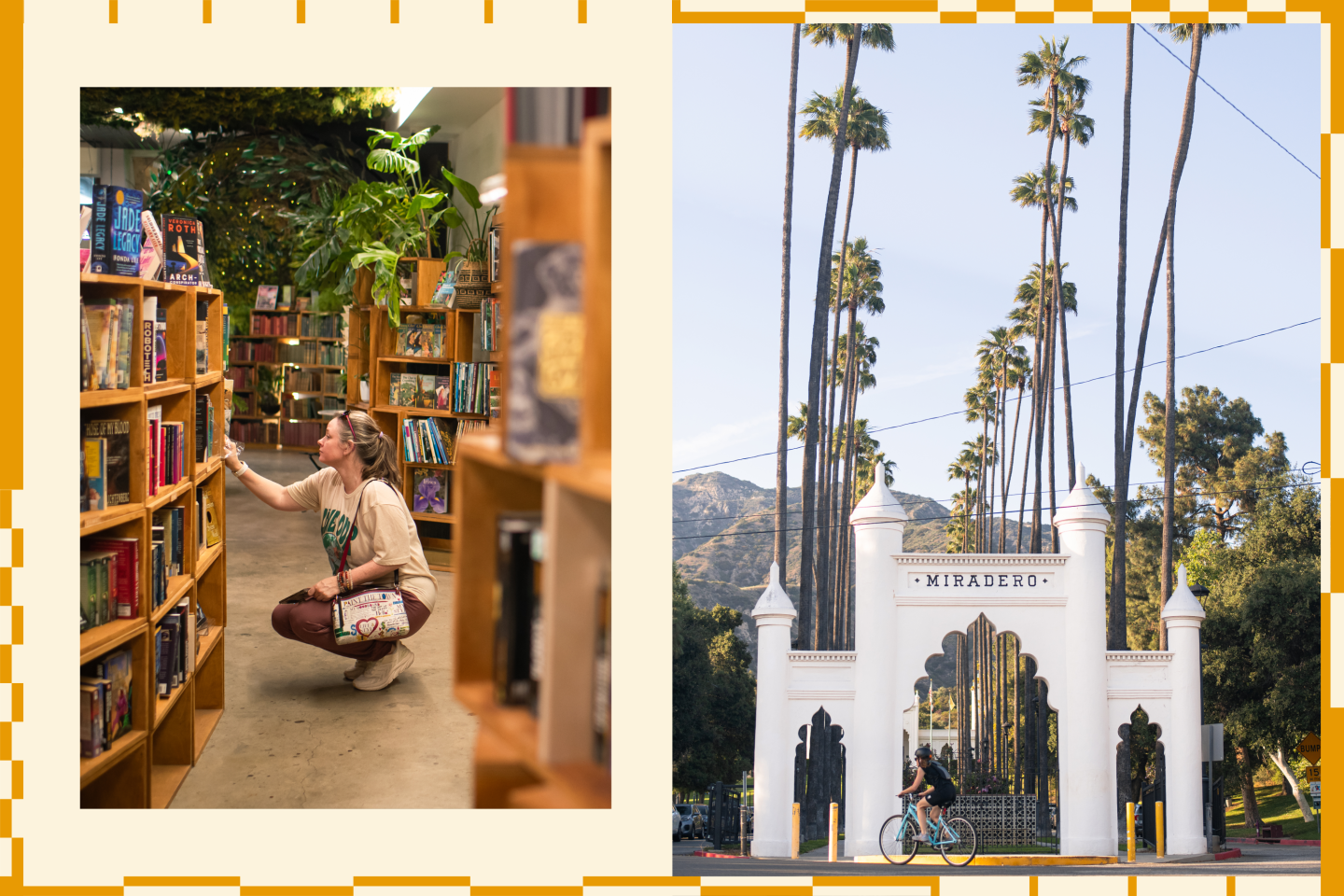This must be Glendale
- Share via
Often overshadowed by its neighbors with glitzier landmarks — namely Burbank and Pasadena — Glendale gets an unfair rap as being suburban and drab. Many Angelenos (especially those on the Westside) know it primarily for its massive malls: the Glendale Galleria and oft-meme’d Americana at Brand.
Get to know Los Angeles through the places that bring it to life. From restaurants to shops to outdoor spaces, here’s what to discover now.
While its retail landscape is certainly impressive, that’s just the tip of the iceberg of this 30-square-mile city that traverses two mountain ranges and boasts dozens of historic buildings and more than 50 parks. Visit one small corner of this century-old city and your main takeaway might be the preponderance of Armenian bakeries, kebab joints and hookah bars. For a more bohemian, historic take on Glendale, visit Adams Square, where storybook Tudor houses proliferate and a queer community flourishes. At Adams Square Mini-Park, once a gas station, find a public art gallery inside an old service building and nearby crosswalks that have been painted vibrant colors as a way to increase pedestrian visibility and celebrate the local community.
Vintage period revival mansions on enviously large plots of land can be found in Glendale’s higher elevation communities, like Chevy Chase Canyon or El Miradero, situated below the 31-acre Brand Park. Plenty of historic Queen Anne-Eastlake Victorian homes dating to the 1870s to 1890s are also still standing. Some of these older buildings — like a turn-of-the-century Moorish mansion and an old winery barn — now serve as museums, public libraries and nature centers.
While there is plenty of new development — think high-rise condominiums, strip malls, big-box stores and expanded transportation routes — Glendale actively balances preserving its historic sites while promoting change. Take, for instance, Brand Boulevard, the heart of downtown Glendale. It’s a dynamic mix of new retailers, multicultural restaurants and landmark businesses like the 100-year-old Alex Theatre and a corset shop that has been in the same location since 1922.
And the transformation of the city goes even further.
While Glendale once bore the unfortunate reputation of being a mid-20th-century “sundown town,” it has since evolved into a vibrant melting pot. Today, it is home to large communities of Armenians, Latinos, Koreans, Filipinos and Persians. In a significant step toward reconciliation, Glendale became the first city in California — and the third in the nation — to formally apologize for its racist past.
Whichever analogy you choose — a Rubik’s cube, an onion — Glendale is one of the more fickle SoCal destinations that takes time to get to know. There are pockets of funk, beauty and culture — a neon museum, a retro roller rink, a progressive art museum at the top of a cemetery. Glendale also produced numerous Hollywood greats, like John Wayne, Eva Mendes and Paul Walker, and serves as the final resting spot of even larger luminaries, such as Walt Disney, Elizabeth Taylor and Michael Jackson.
Here’s where to go to get the best representation of this oft-misunderstood place that is actually, to name-drop its century-old moniker, a “jewel” of a city.
What's included in this guide
Anyone who’s lived in a major metropolis can tell you that neighborhoods are a tricky thing. They’re eternally malleable and evoke sociological questions around how we place our homes, our neighbors and our communities within a wider tapestry. In the name of neighborly generosity, we may include gems that linger outside of technical parameters. Instead of leaning into stark definitions, we hope to celebrate all of the places that make us love where we live.
Our journalists independently visited every spot recommended in this guide. We do not accept free meals or experiences. What L.A. neighborhood should we check out next? Send ideas to guides@latimes.com.

Taste authentic Armenian baked goods at Art’s Bakery & Cafe

Four years after immigrating to the United States from Armenia in 1993, Angela and Simon Grigoryian opened Art’s, and the business is still owned by the same family. Their longest-sold product is the nazook, a crusty Armenian pastry of flour, butter, sugar, sour cream and often nuts, based on a beloved family recipe. Neapolitan pizzas were added to the menu last year, baked in a custom-built pizza oven, with toppings ranging from beef shawarma to burrata to caviar and salmon.
As a functioning bakery, someone is always manning the ovens that are constantly churning out freshly-baked and from-scratch goods, such as the nearly 2-feet-long loaves of shoti puri breads that are so popular Art’s offers direct delivery of them to nearby homes and businesses.
Food purchased from the cafe or bakery can be enjoyed alfresco on the white marble patio tables or taken to the nearby Adams Square Mini-Park, where a 1936 gas station functions as a small public art gallery. By the year’s end, Art’s will open a coffee shop next door to the bakery because deep-fried donuts filled with chocolate cream always taste better with a frothy latte.
Skate the night away at Moonlight Rollerway

Moonlight Rollerway is open only at night: Mondays are reserved for adults ages 18 and over; Wednesdays are “Rainbow Skate” for the queer community; Thursdays feature throwbacks from the 1970s through 1990s; and every other Friday is dedicated to R&B. Nearly half the crowd brings in their own skates, so on any given visit, you can expect to see some moves.
But you don’t need to be a pro to skate here. Those just starting out, or still struggling to stay upright, can sign up for training classes taught at the rink or skills classes that teach tricks like skating backwards. It’s a friendly place, where a light-up flower crown lost by a novice skater after a fall will almost surely be returned to its owner by another skater sturdy enough to bend over and pick it up.
Shop, dine, people-watch or live at the Americana at Brand

Opened in 2008, the Caruso property claims to be one of the 15 most-productive and highest-grossing retail centers in the world. It’s a place where you’ll find a bevy of high-end shops (Gucci, Saint Laurent, Louis Vuitton, Tiffany & Co.), entertainment stores (Apple, the Samsung Experience Store, Barnes & Noble) and notable restaurants (Seabutter Sushi, La La Land Kind Cafe, Bacari).
Whether it’s a movie, a new Alo Yoga colorway, the latest iPhone or a Wetzel’s Pretzels craving that brings you to the Americana, you may decide you never want to leave the premises. And that’s an option. There are more than 200 luxury residential condos and apartments located above the stores and restaurants, offering a rare opportunity for Angelenos to live in an enclave where (almost) everything you need is just a short stroll or escalator ride away.
Shop for books, vinyl or houseplants at Lost Books

The layout is designed to promote wandering and even literally getting lost, with the rows of used and new books arranged in an almost maze-like fashion. Reading nooks in the form of mismatched chairs and couches abound, and customers are welcome to sit and read without having to worry about being shooed off.
Lost Books places an emphasis on highlighting tomes that are rare and unique, boasting extensive selections of mythology and Los Angeles history, as well as a special vertical bookcase dedicated solely to the works of Stephen King. One of the store’s newest endeavors is its Blind Date With a Book section that’s filled with brown paper-wrapped books labeled with cheeky descriptions that read like dating profiles. Want to sample the first page or scope out the title? You’ll have to buy the book first.
Catch an immersive show on the round stage at Nocturne Theatre

The layout fosters a sense of connection between the audience and the performers. Co-owner Melissa Meyer has said she wants the space, formerly known as Glendale Centre Theatre, to be “the Magic Castle of immersive theater.”
The shows at the Nocturne are equally unique, often emphasizing supernatural characters that require inventive creature fabrication. Past productions have included “Dracula,” “Hunchback of Notre Dame” and “Little Shop of Horrors.” Annual seasonal events include “Madame Scrooge: A Christmas Carol Musical” and holiday jazz cabaret “Spirits of the Season.”
Food and drink — including beer, wine and, in the coming weeks, themed cocktails — are not only sold at the venue but also allowed in the theater so you can munch and sip while being entertained.
Order the freshest catch of the day at Fish King
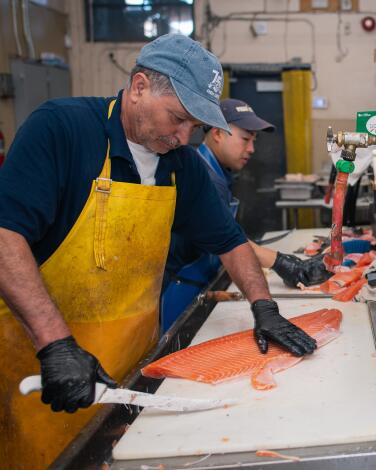
Opened in 1948, it’s one of the few remaining independent specialty fish markets in the area. Family-owned and operated, the seafood market has expanded over the years to include the Galley, an on-site deli serving plate meals, rice bowls, tacos, cioppino, sushi burritos, poke and more. Purchasing fresh seafood, but worried about cooking it at home? Fish King will fry or charbroil it for you for an extra fee.
The market has a reputation for sourcing high-quality and fairly-priced seafood, and makes its own homemade tartar and cocktail sauces. It also stocks Japanese dry goods and an array of imported and mid-cost wine, beer and sake. Despite the business’ name, Fish King also sells chicken and carries turkey and duck during the holidays.
Dine in a classic tiki paradise at Damon’s

Start with the restaurant’s famous Mai Tai or coconut Chi Chi and then sop up the stiff drinks with the garlic toast, which some customers come for exclusively. Damon’s is best known for its 8-ounce filet mignon with Bordelaise sauce, prime rib roast and beer- and coconut-battered fried shrimp.
With its multiple rooms and large tables, it’s a popular spot for large parties and often gets rented out to host birthdays, class reunions, holiday events and even weddings. Don’t forget to say hello to the finned friends inside the restaurant’s beloved tropical aquarium.
Delight in cheap drinks and karaoke at Dave’s on Broadway

The interior harks back to Glendale’s Golden Age. Old-fashioned Edison bulbs cast noir shadows on patrons who flock there for karaoke or open mic nights. There’s a jukebox and newly upholstered crimson-red pool tables, which are free to play on Wednesdays and Sundays.
But it’s the drinks that Dave’s is most famous for. Operating as a speakeasy in the 1930s, Dave’s was rumored to have underground tunnels along Broadway that enabled alcohol deliveries to the former Glendale Hotel. When Prohibition was repealed at the end of 1933, Dave’s was the first bar in Glendale to start publicly pouring.
Nowadays, the bar is known for its price-friendly deals, including shot and beer combos, discounted mystery shots and happy hour from 3 to 9 p.m., except on Sundays when it lasts all day.
View new and seminal art at Forest Lawn Art Museum

In the Hall, suits of armor and medieval tapestries greet you as you make your way to the grand auditorium, which was built to house one of the world’s longest paintings: a 195-foot-long depiction of the Crucifixion by Polish artist Jan Styka. At the museum next door, the focus is more secular and modern. Here you’ll find the museum’s permanent collection of 19th- and 20th-century European and American paintings, sculptures and stained glass, along with rotating exhibits that highlight local artists and communities. Past exhibits have centered around the art of the Filipino diaspora and images of the Virgen de Guadalupe found throughout Los Angeles. Admission to both the Hall and museum are free.
Bring home a Middle Eastern feast from Mini Kabob

But Mini Kabob’s humble exterior hasn’t hurt business. Consistently ranked in national restaurant guides, it is beloved for its meticulously marinated and open fire-grilled meats that come from recipes passed down through generations of the Martirosyan family, who took over the business in 1987. Attention to detail is key in the preparation of the kebabs, falafel plates, plentiful salads and cold appetizers. Peek behind the counter and you’ll find the Martirosyan patriarch helming the meat prep, the matriarch in charge of the deli items and the son and his wife working on everything in between.
Late last year, Mini Kabob expanded into Thousand Oaks as one of the vendors at the new food hall, Neighborly. It’s a win-win arrangement, offering suburbanites who live more than an hour’s drive from Glendale the chance to try the cherished local eatery’s food. And it has enabled Mini Kabob to spread its wings and test out new menu items, such as a meze bowl and cheeseburger wrap.
Escape the city at Deukmejian Wilderness Park
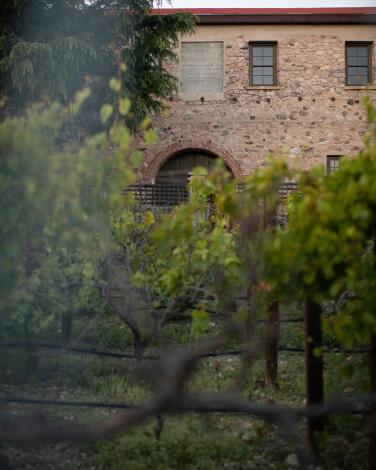
Those who’d rather keep their shoes out of the dirt can visit the Stone Barn Nature Center, an educational space housed in a two-story building near the park’s entrance that was built in 1915, when the land was used as a vineyard. It includes free exhibits on local plants and wildlife in the park. Regular events hosted at Deukmejian include “Wilderness Workdays,” where volunteers beautify the land by watering and removing invasive plants, and monthly family-oriented hikes, crafts and games through the Glendale Outdoors! (GO!) Community Project.
There is no admission fee to the park and parking is also free, although scarce. Wildlife sightings, including black bears and California mountain kingsnakes, are common as the park is buttressed on three sides by the Los Angeles National Forest.
Eat at Zhengyalov Hatz, the only Michelin Guide-recognized Armenian restaurant in America

Each zhengyalov hatz is about a foot long and packed with 15 finely diced herbs ranging from the commonplace (spinach, green chard) to the lesser-known (sorrel, chervil). Tip: A side of butter can help soften the earthy flavors. Wash the meal down with a pot of hot tea (thyme and mint or cinnamon), a cup of Armenian coffee or a traditional yogurt drink called tan. The restaurant also sells beer and wine.
In 2023, the Michelin Guide recognized the restaurant, a rustic-industrial space with exposed brick walls and tables decorated with Persian carpet runners. Since then, its menu has expanded. A secondary grill was built in 2024 to serve up regional meat-centric dishes such as chicken shawarma and lahmajun, a crispy Armenian flatbread similar to pizza.
Explore historic buildings atop a hill at Brand Park
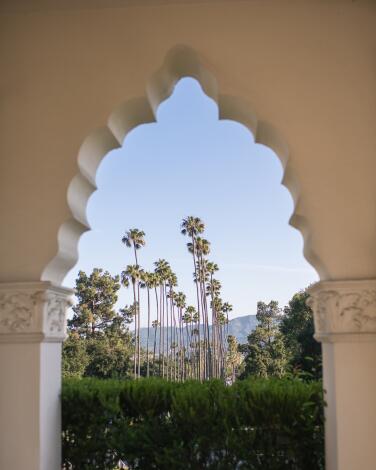
The grounds include a baseball and football field, picnic areas, playground, the nature-based Miss American Green Cross statue and numerous hiking trails through the Verdugo Mountains, which play host to a 10K trail run and hike every first Sunday of May. There is even free mulch distributed daily on the east side of the grounds by the former basketball court.
Brand Park is also home to the Whispering Pine Teahouse, a traditional wooden teahouse that sits behind a small Japanese garden featuring a koi pond, waterfall and arched “taiko bashi” bridge. Like many Japanese properties, the teahouse and garden are cordoned off within garden gates to mark it as a separate space from the rest of the park. Every third Sunday of the month, a volunteer organization offers workshops highlighting Japanese art and culture such as “chado” (tea ceremonies), “ikebana” (flower arranging) and “budo” (martial arts).
Up the path is the Doctor’s House, a Queen Anne-Eastlake-style Victorian home that functioned for decades as a dual residence-medical office in downtown Glendale. The building was saved from demolition in 1979 and transported to Brand Park to serve as an educational and historic space, with docent-led tours offered every Sunday afternoon and a Victorian-themed egg hunt every Easter.
Enjoy international and independent acts at the 100-year-old Alex Theatre

Everything else about the Alex, owned by the city of Glendale, has remained nearly unchanged from its early days. Designed with a Greco-Egyptian exterior, the iconic marquee, 100-foot-tall art deco neon tower, original ticket booth, Doric columns and terrazzo floor are still intact, standing out in stark contrast to the ever-evolving storefronts surrounding it on Brand Boulevard.
The interior of the theater has also been carefully preserved and retains original sculptures, wall paintings and light fixtures. A few years ago, the Alex received a $2-million audio and technical upgrade expanding the theater’s capacity to produce state-of-the-art content from its shows, including Netflix specials.
Play a perfect game at Montrose Bowl, a vintage landmark
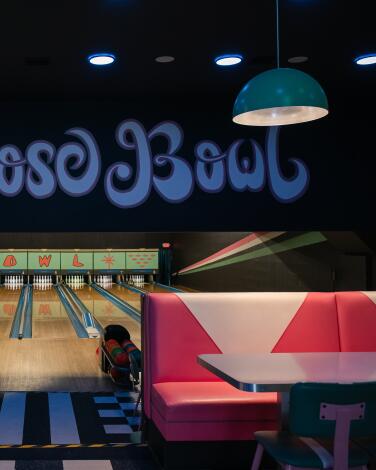
Opened in 1936, Montrose Bowl has been lovingly restored with a vintage 1950s style, complete with a classic black-and-white checkered floor, walls in shades of turquoise and salmon pink and vinyl seating. It’s quaint, having just eight lanes.
The bowling alley has been used as a filming location (see if you can spot it in “Teen Wolf” and “Pleasantville”) and is often booked for private events, including cast and company parties for Netflix, NBC and Warner Bros.
Lanes for up to five players are priced by the hour, and shoe rentals are extra. The adjoining cafe serves up classic diner fare such as sliders, chicken sandwiches, hot wings and pizza.
